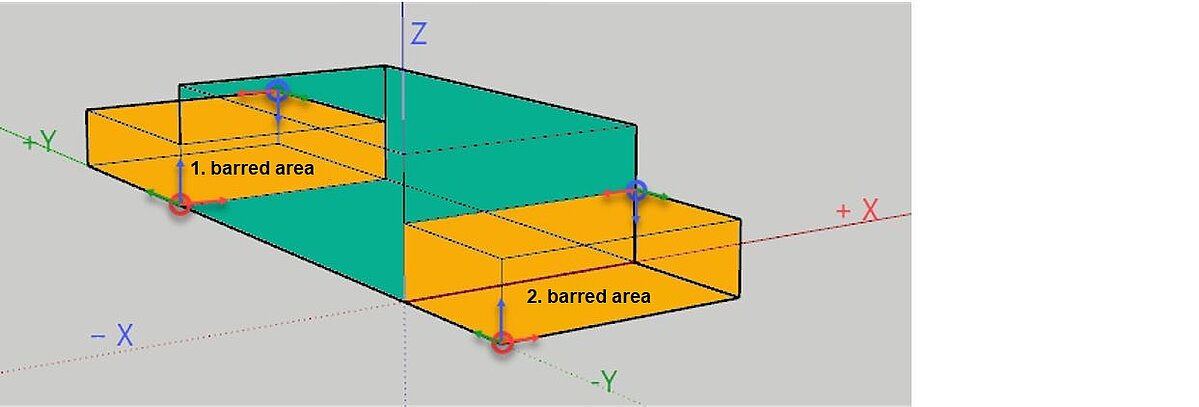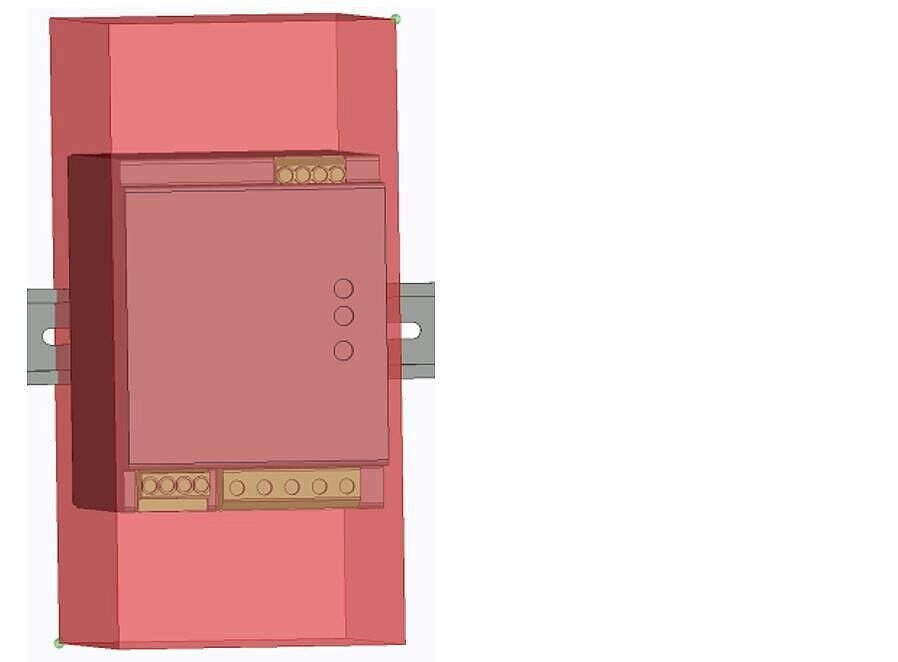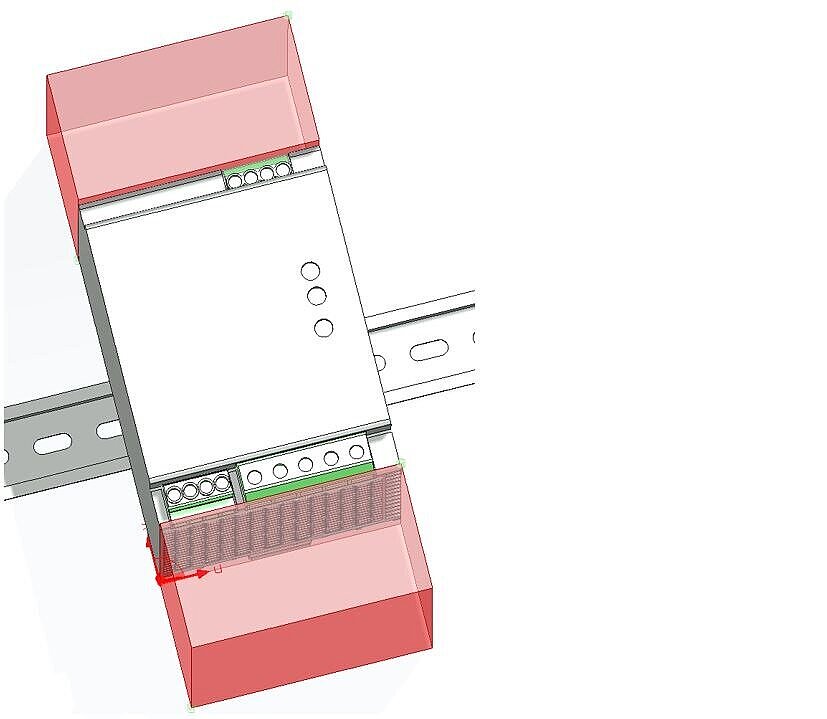3.5 Barred Areas
Chapter navigation
Barred areas indicate product volumes with diminished usability. For example, these spaces may have to be kept free for mounting, manipulation or maintenance, or a minimum distance between electrical components might have to be maintained.
Level | Type | Structure element name | Application, explanation | Function for CAx and process |
|---|---|---|---|---|
1 | C | Number of barred areas | Indicates the number of designated barred areas | Calls the block that describes barred areas; number of calls determined by number given here |
1/2
| B
| Barred area
| Barred area block Description of necessary article-specific spatial information related to mechanical or electrical requirements
| Used to position item correctly with reference to spatial dependencies |
3 | M | Type of barred area | Information on application/use of barred area For value list, see following table | The type can be used to control display functions or safety checks in the CAx system |
W | Connection | Work spaces needed for connecting the wires to the device will depend on the conductor cross-section, bending radiuses, the way the ends of wires have to be handled, and the manner of wire insertion |
| |
W | Maintenance | Necessary maintenance space for the maintenance-related movement of hoods and flaps beyond the extent of the enveloping-body dimensions |
| |
W | Thermal | Air spaces for heat dissipation |
| |
W | Electrical - parts to be grounded | Isolation distances needed to provide necessary air spaces (e.g., space for air outlet), and for parts requiring grounding |
| |
W | Electrical - parts carrying active electrical current | Additional air spaces necessary to create isolation distances between component and active current-carrying parts. (Conductor distance) |
| |
W | Mechanical | Space needed for assembly-related movement beyond the enveloping-body dimensions, insofar as this is not described by other barred areas |
| |
3 | M | Extension (positive) (in mm) | Specification of the space’s final point in form of coordinate data and arrangement of the final point | Offers ability to depict necessary space when using CAx system to position articles |
3 | M | Extension (negative) (in mm) | Specification of the space’s starting point in form of coordinate data and arrangement of the final point | Offers ability to depict necessary space when using CAx system to position articles |
These barred areas are described in the form of simple cuboids. To do so, it is only necessary to describe two opposing corners of the cuboid in space, using the corresponding properties.

Figure 33: CAx-basis barred-areas example: explanation of two-point description
Preferably, the “expansion (negative) (in mm)” property should describe the corner with the smallest X/Y/Z values (see red circles in Figure 33), while the “expansion (positive) (in mm)” property should describe the opposing value with the greatest expansions along the axes (see blue circles in Figure 33).
Barred areas example:

Figure 34: CAx basic example of restricted spaces
Hint: Instead of two separate restricted spaces above and below a product, a restricted space can also be described as a volume spanning over the entire product.
This information can be described in the following ways:
Case a): A barred area enclosing the complete device is indicated (column 1).
Case b): Two separate, required barred areas are specified, respectively above and below the device (column 2).

Figure 35: CAx basis example for a blocking space: small green points mark coordinates standard


Figure 36: CAx-basis example of a barred area; the small green points at the bottom left and top right mark the two necessary coordinates
Figure 37: CAx-basis example of two separate barred areas; the small green points at the lower left and top right mark the coordinates for each